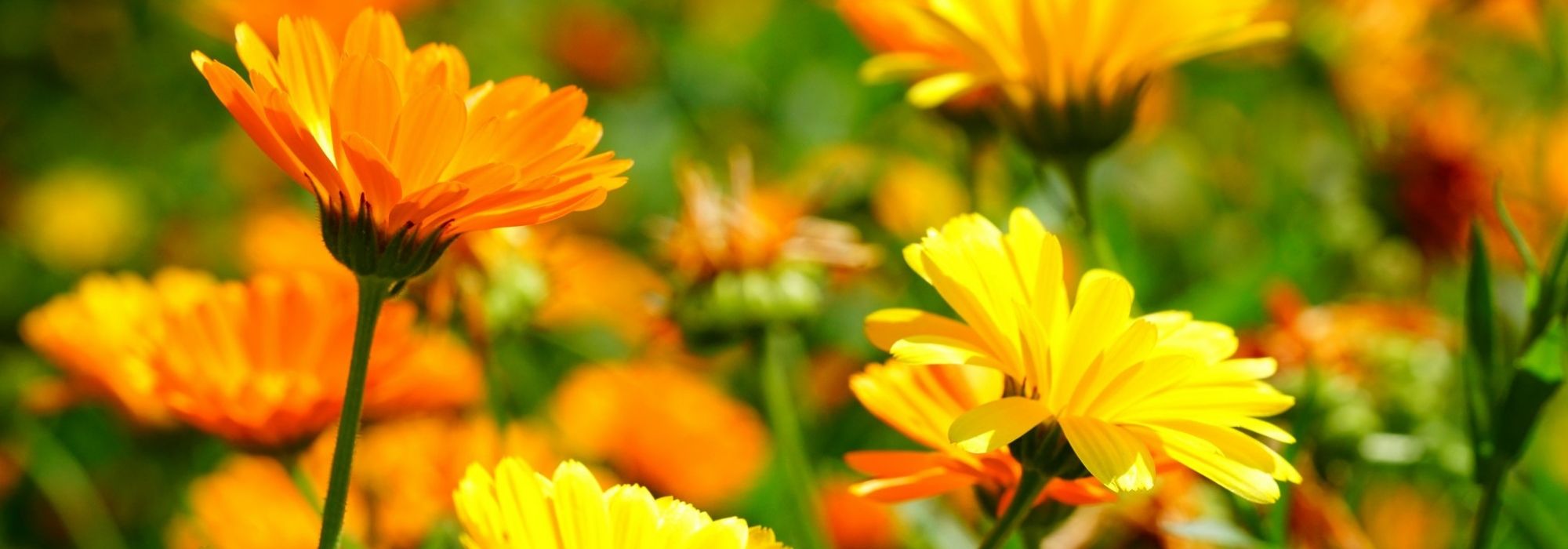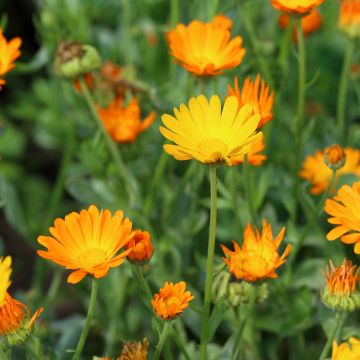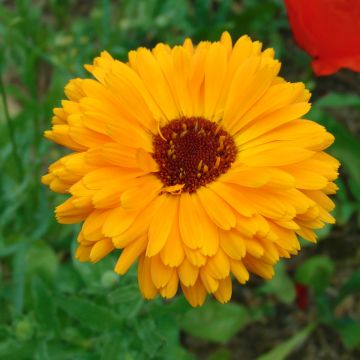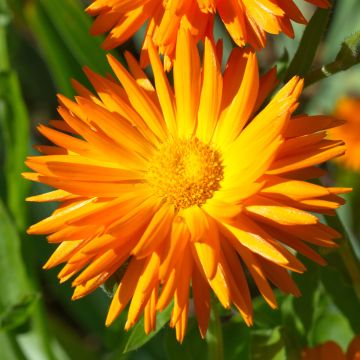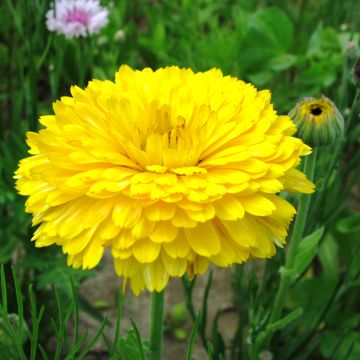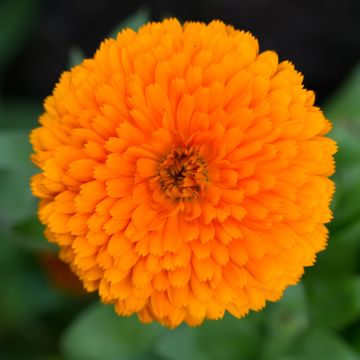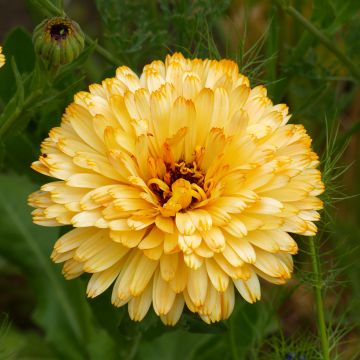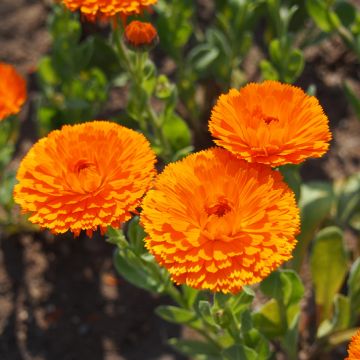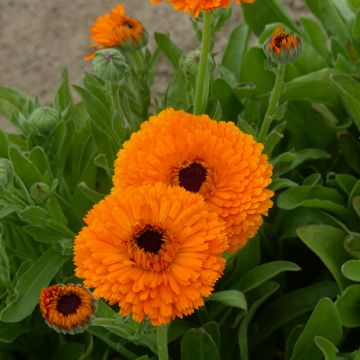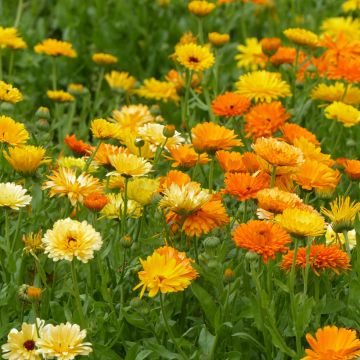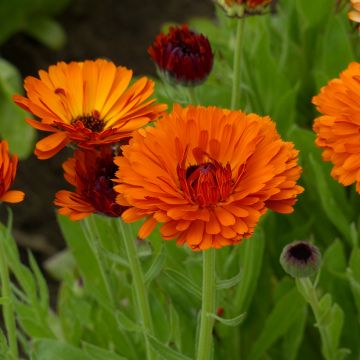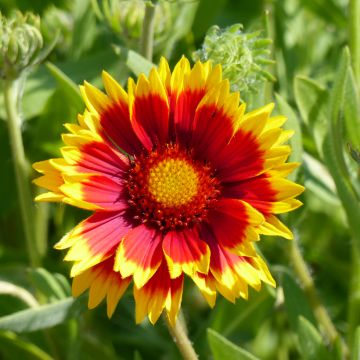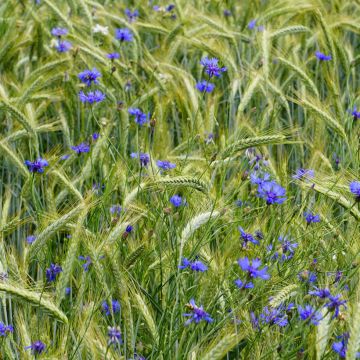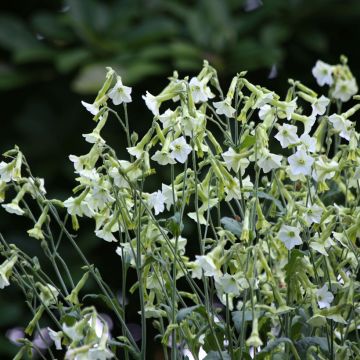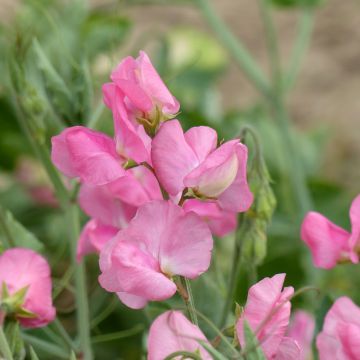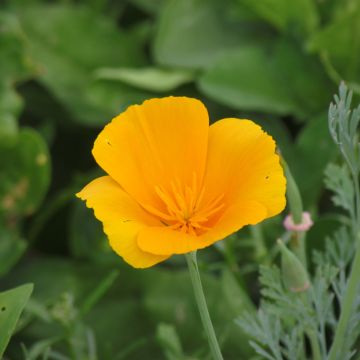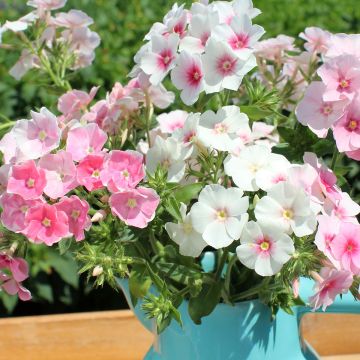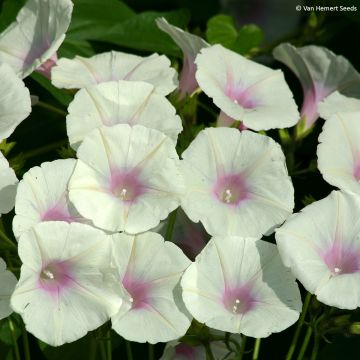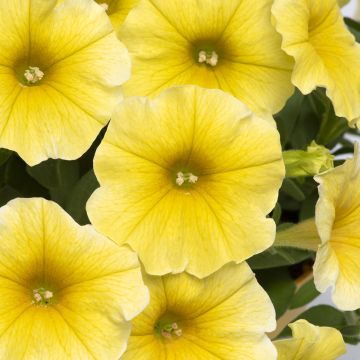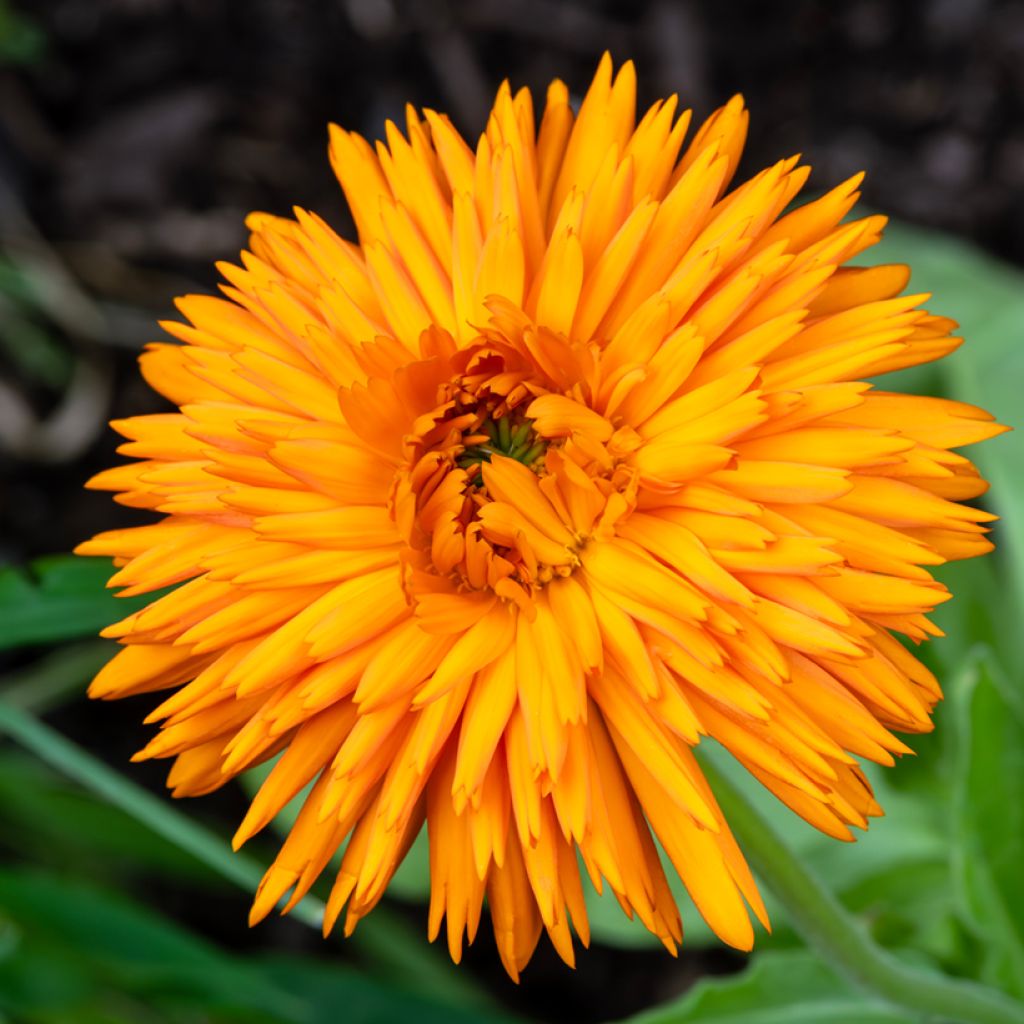

Seeds of Calendula officinalis Calexis Orange - Garden Marigold
Seeds of Calendula officinalis Calexis Orange - Garden Marigold
Calendula officinalis Calexis Orange
English Marigold
Special offer!
Receive a €20 voucher for any order over €90 (excluding delivery costs, credit notes, and plastic-free options)!
1- Add your favorite plants to your cart.
2- Once you have reached €90, confirm your order (you can even choose the delivery date!).
3- As soon as your order is shipped, you will receive an email containing your voucher code, valid for 3 months (90 days).
Your voucher is unique and can only be used once, for any order with a minimum value of €20, excluding delivery costs.
Can be combined with other current offers, non-divisible and non-refundable.
Home or relay delivery (depending on size and destination)
Schedule delivery date,
and select date in basket
This plant carries a 6 months recovery warranty
More information
We guarantee the quality of our plants for a full growing cycle, and will replace at our expense any plant that fails to recover under normal climatic and planting conditions.
Does this plant fit my garden?
Set up your Plantfit profile →
Description
The Calendula officinalis Calexis Orange, small in size but with large, original, double flowers, full of pointed and curled petals, brings something new to the world of dwarf Marigolds. Very floriferous, robust, and wind-resistant, it fits perfectly in borders and sunny planters, bringing life for weeks. Sown in March-April, this fast-growing annual will bloom approximately 10 weeks later. Easy to grow in ordinary soil, this plant is accessible to all, whether beginner or experienced gardeners.
The Calendula officinalis Calexis Orange belongs to the asteraceae family, with its characteristic inflorescence in the shape of a daisy called a head. It is a recent variety, which received the gold medal from the Fleuroselect jury in 2019. The annual plant forms a clump of short, branched stems in a few months, giving it a compact appearance. This Calexis Orange variety will reach 30 cm (11.8 in) in all directions. Its lanceolate leaves are velvety and highly aromatic when crushed. Their bright green color provides a beautiful backdrop for its flowers, which are a beautiful pure orange with a brown center. Its flowering starts in June and regularly extends until the end of summer, attracting numerous pollinating insects. Each head measures approximately 8 cm (3.1 in) in diameter. It is composed of a center of fertile florets surrounded by numerous long and pointed "petals" that are partially curled, which are actually ligulate flowers gathered in a crown. This crown opens in the sun and closes at night or in cloudy weather. Marigold seeds spread easily in various ways: through the action of the wind, falling to the ground, but also by clinging to clothes and animal fur, as these little crescents are bristly. They self-sow easily, as their germination is not hindered by cold temperatures. Seedlings thrive in all types of soil, as long as they receive ample sunlight throughout the day.
Calendula Calexis Orange is a precious ally for quickly enhancing a border or decorating a sunny terrace. Marigolds naturally find their place in a flowerbed and in a pot, whether alone or in groups. It pairs perfectly with the wide range of dahlias and complements airy grasses. It can be planted in small clusters amidst the gray foliage of artemisias and stachys, with California poppies, red or blue shrubby salvias, cornflowers, or surrounded by greenery, paired with tansies, Kochia childsii, or white, yellow, or red ground cover roses that harmonize with its rich orange hues. Calendula is also an edible flower, to be consumed in moderation, which can be used in salads, soups, or desserts. Some say its flavor resembles that of pepper.
Listed in gardens since the 12th century, Calendula officinalis has virtues that are exploited in various fields. It is first and foremost a dye plant, used as a pigment. But it is also used in cosmetics, pharmacology, and homeopathy for its soothing, astringent, healing, anti-inflammatory, and hepatic properties, among others. Finally, its nickname of False Saffron comes from its culinary use. Indeed, Marigold is a great substitute for this spice, coloring rice dishes, stews, soups, and herbal teas. When raw, it flavors cheeses, salads, and even butter. Moreover, it has long been established in vegetable gardens as an ally to other edible plants, as it repels nematodes and attracts numerous pollinating insects.
Flowering
Foliage
Plant habit
Botanical data
Calendula
officinalis
Calexis Orange
Asteraceae
English Marigold
Cultivar or hybrid
Other Marigold seeds
View all →Planting and care
Marigold seeds can be sown directly in the garden from March onwards in mild regions. If you are in a cold region, wait until the end of heavy frosts, as the seeds prefer temperatures close to 20°C. Loosen the soil a bit and choose a sunny location. The seeds will be sown by broadcasting, covered with 1 or 2 mm (0.1 in) of soil, and lightly watered. They will germinate between 5 and 10 days, and if necessary, you can thin them out by spacing them 30 cm (11.8 in) apart.
However, if you are not concerned about heavy winter frosts, you can start your sowing as early as September by sowing in pots and keeping them under cover until spring. Then, you can transplant the young plants from March onwards either in pots or directly in the ground to benefit from early growth.
Cultivation:
Marigolds are fast-growing plants that thrive in full sun or partial shade in warm climates and sheltered positions. They are not very demanding, as long as they are planted in well-drained, moderately fertile, and light soil. Protect the plants from slugs and snails, which are fond of them.
Sowing period
Intended location
Planting & care advice
This item has not been reviewed yet - be the first to leave a review about it.
Similar products
Haven't found what you were looking for?
Hardiness is the lowest winter temperature a plant can endure without suffering serious damage or even dying. However, hardiness is affected by location (a sheltered area, such as a patio), protection (winter cover) and soil type (hardiness is improved by well-drained soil).

Photo Sharing Terms & Conditions
In order to encourage gardeners to interact and share their experiences, Promesse de fleurs offers various media enabling content to be uploaded onto its Site - in particular via the ‘Photo sharing’ module.
The User agrees to refrain from:
- Posting any content that is illegal, prejudicial, insulting, racist, inciteful to hatred, revisionist, contrary to public decency, that infringes on privacy or on the privacy rights of third parties, in particular the publicity rights of persons and goods, intellectual property rights, or the right to privacy.
- Submitting content on behalf of a third party;
- Impersonate the identity of a third party and/or publish any personal information about a third party;
In general, the User undertakes to refrain from any unethical behaviour.
All Content (in particular text, comments, files, images, photos, videos, creative works, etc.), which may be subject to property or intellectual property rights, image or other private rights, shall remain the property of the User, subject to the limited rights granted by the terms of the licence granted by Promesse de fleurs as stated below. Users are at liberty to publish or not to publish such Content on the Site, notably via the ‘Photo Sharing’ facility, and accept that this Content shall be made public and freely accessible, notably on the Internet.
Users further acknowledge, undertake to have ,and guarantee that they hold all necessary rights and permissions to publish such material on the Site, in particular with regard to the legislation in force pertaining to any privacy, property, intellectual property, image, or contractual rights, or rights of any other nature. By publishing such Content on the Site, Users acknowledge accepting full liability as publishers of the Content within the meaning of the law, and grant Promesse de fleurs, free of charge, an inclusive, worldwide licence for the said Content for the entire duration of its publication, including all reproduction, representation, up/downloading, displaying, performing, transmission, and storage rights.
Users also grant permission for their name to be linked to the Content and accept that this link may not always be made available.
By engaging in posting material, Users consent to their Content becoming automatically accessible on the Internet, in particular on other sites and/or blogs and/or web pages of the Promesse de fleurs site, including in particular social pages and the Promesse de fleurs catalogue.
Users may secure the removal of entrusted content free of charge by issuing a simple request via our contact form.
The flowering period indicated on our website applies to countries and regions located in USDA zone 8 (France, the United Kingdom, Ireland, the Netherlands, etc.)
It will vary according to where you live:
- In zones 9 to 10 (Italy, Spain, Greece, etc.), flowering will occur about 2 to 4 weeks earlier.
- In zones 6 to 7 (Germany, Poland, Slovenia, and lower mountainous regions), flowering will be delayed by 2 to 3 weeks.
- In zone 5 (Central Europe, Scandinavia), blooming will be delayed by 3 to 5 weeks.
In temperate climates, pruning of spring-flowering shrubs (forsythia, spireas, etc.) should be done just after flowering.
Pruning of summer-flowering shrubs (Indian Lilac, Perovskia, etc.) can be done in winter or spring.
In cold regions as well as with frost-sensitive plants, avoid pruning too early when severe frosts may still occur.
The planting period indicated on our website applies to countries and regions located in USDA zone 8 (France, United Kingdom, Ireland, Netherlands).
It will vary according to where you live:
- In Mediterranean zones (Marseille, Madrid, Milan, etc.), autumn and winter are the best planting periods.
- In continental zones (Strasbourg, Munich, Vienna, etc.), delay planting by 2 to 3 weeks in spring and bring it forward by 2 to 4 weeks in autumn.
- In mountainous regions (the Alps, Pyrenees, Carpathians, etc.), it is best to plant in late spring (May-June) or late summer (August-September).
The harvesting period indicated on our website applies to countries and regions in USDA zone 8 (France, England, Ireland, the Netherlands).
In colder areas (Scandinavia, Poland, Austria...) fruit and vegetable harvests are likely to be delayed by 3-4 weeks.
In warmer areas (Italy, Spain, Greece, etc.), harvesting will probably take place earlier, depending on weather conditions.
The sowing periods indicated on our website apply to countries and regions within USDA Zone 8 (France, UK, Ireland, Netherlands).
In colder areas (Scandinavia, Poland, Austria...), delay any outdoor sowing by 3-4 weeks, or sow under glass.
In warmer climes (Italy, Spain, Greece, etc.), bring outdoor sowing forward by a few weeks.






























